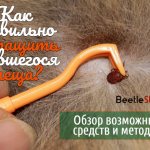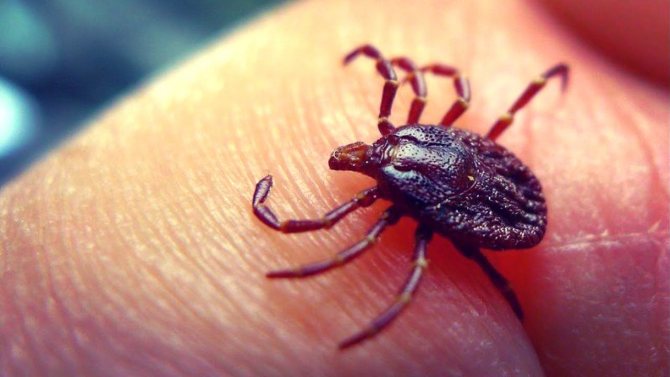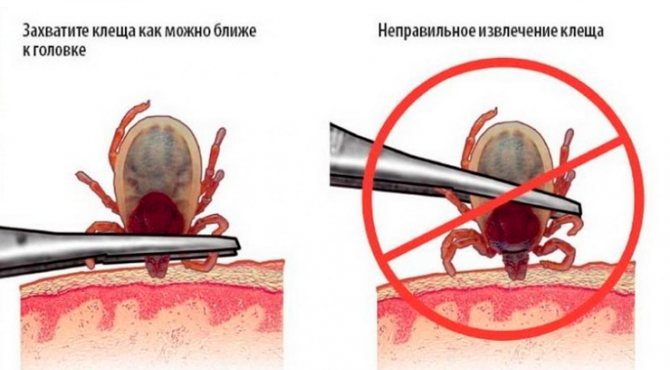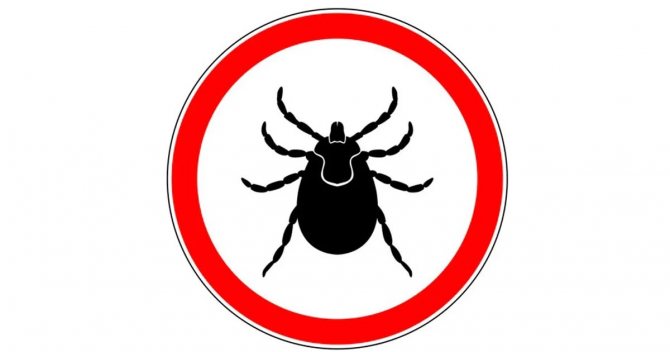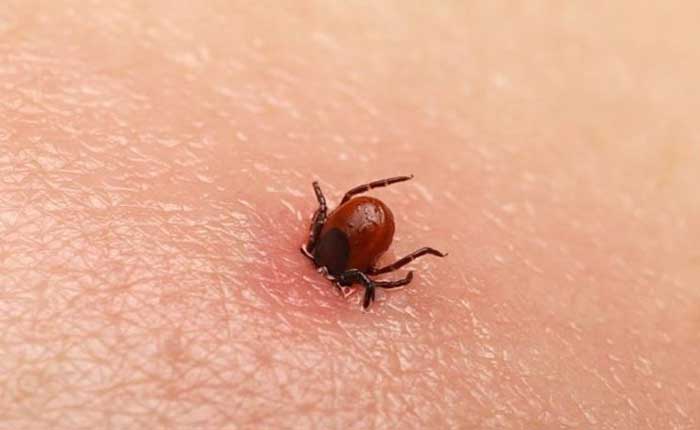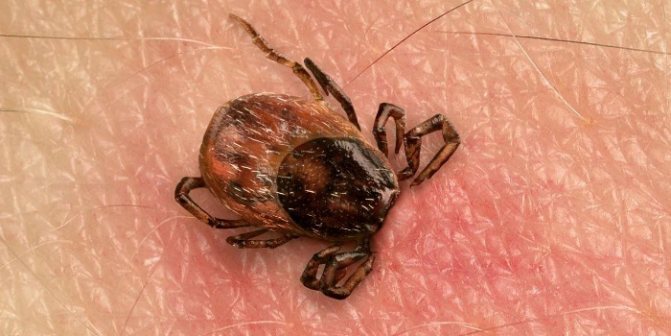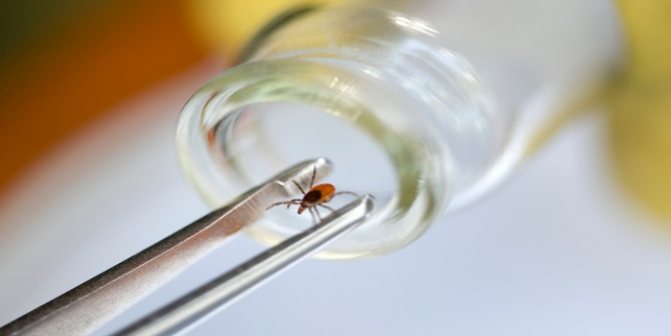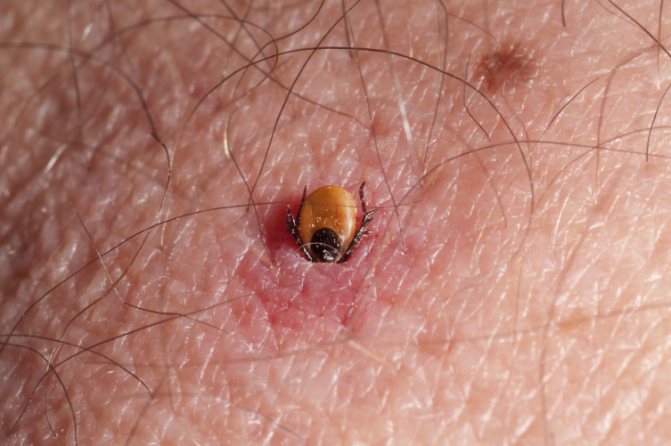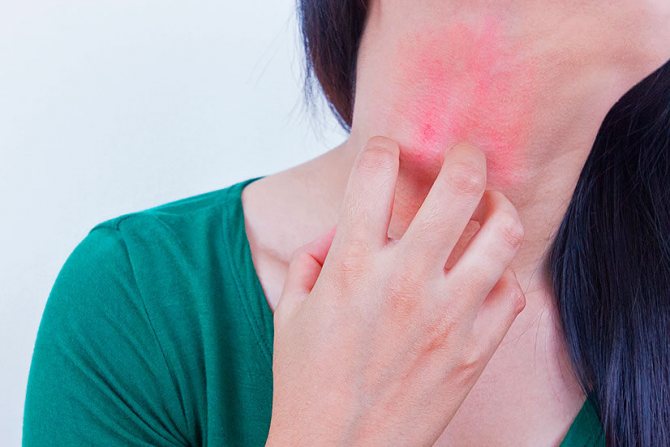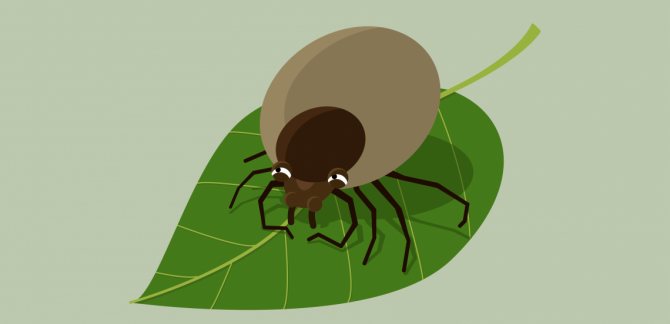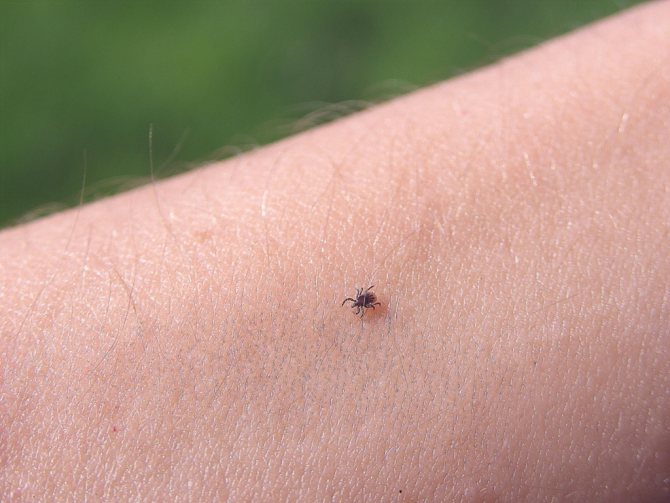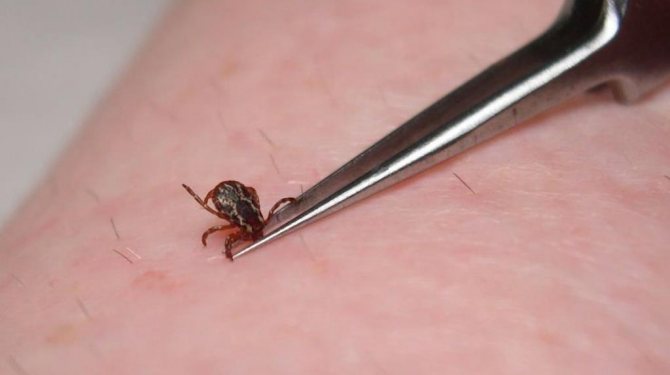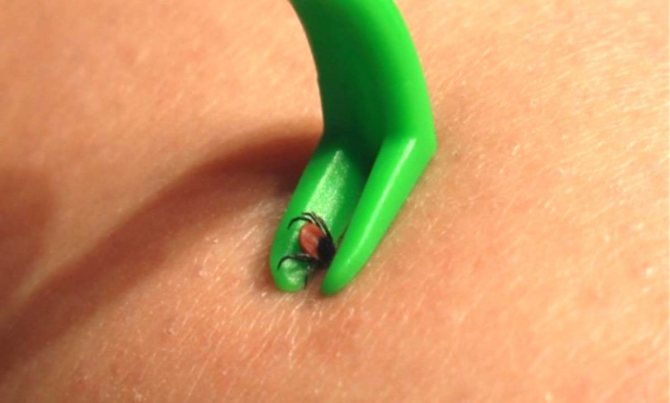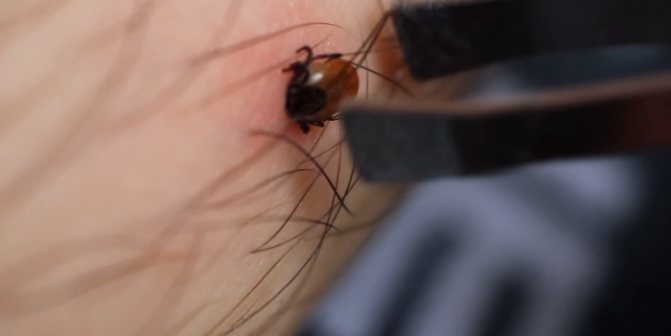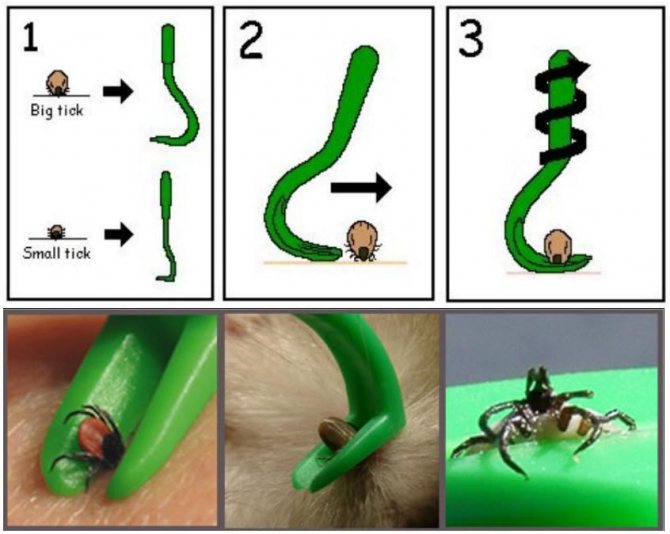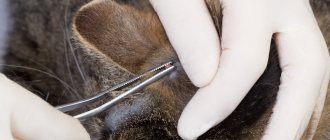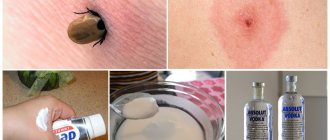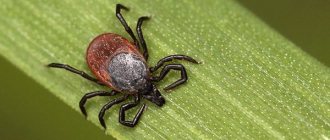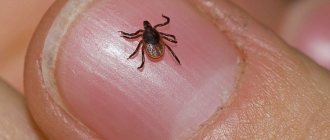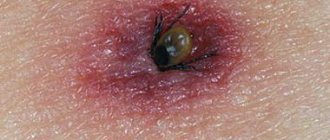As soon as warm days come and the sun warms up, ticks wake up. They are waiting for us everywhere - in the park and garden, in a bouquet of wildflowers and in the middle of the metropolis. Therefore, each person should know how to remove a tick, if "lucky" to meet him. This information is especially useful for hunters, mushroom pickers and fishermen, and just for those who like hiking - that is, those who often find themselves far from civilization. In this case, travelers will have to rely only on themselves.
Where does it stick
Once on clothes, the arthropod can look for a place to suck for an hour. He usually finds places with thin skin and closely spaced blood vessels:
- popliteal space;
- groin area;
- elbow bend of the arm;
- armpit;
- behind the ear space;
- temple;
- the back of the head;
- scalp on the head.
There is a chance to remove the tick before it reaches the indicated places. But if necessary, it can bite anywhere. A free crawling mite must be destroyed, and a biting one must be removed and taken for research.
Important!
Ticks are dangerous due to the increased number of cases of borreliosis and tick-borne encephalitis. Cases of borreliosis are already found even on the territory of Moscow. But you can't just take and pull out a bloodsucker from the skin, there are certain conditions under which a tick will be taken for analysis.
Symptoms and localization
It is good if the parasitic creature is noticed immediately, but this requires careful examination of all parts of the body that, most likely, could have been attacked by an insect.
In most cases, these are:
- groin area;
- skin near the ears;
- armpits;
- inner bend of the elbows and knees;
- shoulders and neck;
- any areas where the vessels are close to the surface of the skin.
But it is not enough to know where the insect can bite, it is important to pull out the tick correctly. If such actions are not carried out, and the bite went unnoticed, then the presence of a bloodsucker can be determined by the following signs:
- inflammation appears on the skin with a dark dot in the center, indicating the presence of the body;
- later, when saturated with blood, his body swells and becomes almost round.
- in this case, there may be a burning sensation, soreness and slight itching;
Conditions for admission to the laboratory
To analyze the tick, you need to pull it out correctly, otherwise there will be no sense from the analyzes. The following are accepted for research:
- live arthropods;
- not smeared with any substances;
- no later than 2 days after extraction.
So that the bloodsucker does not die during the transportation process, wet paper is placed in the jar with the mite to create suitable moisture.
Best of all, if the doctors themselves will take out the tick right in the hospital, but this is a wasted time. Therefore, information on how to remove a tick from a person at home will not be superfluous. And then everything depends on the circumstances.
Important!
The longer the tick eats, the higher the risk that it will transmit the infection.
How to remove the head correctly
The most important thing in removing a tick is the head. She digs deep into the bottom of the skin
Removing the head is problematic, but you should go to the hospital. The medical staff will find a method to remove the tick's head. You should act quickly, do not delay this process.
For safe walking in the forest, meadow, garden, you should wear light-colored things, splash with spireas, balms, anti-insect creams. If you are bitten by a tick, go to the hospital, get tested for the tick and be examined by a doctor. For prevention, drink antibiotics, drink a course.
Nika
79
I am fond of hiking and travel, photography and video filming. I have been hiking since childhood. The whole family went and went - now to the sea, now to the river, to the lake, to the forest. There was a time when we spent a whole month in the forest. We lived in tents, cooked at the stake. This is probably why even now I am drawn to the forest and, in general, to nature. I travel regularly. Approximately three trips per year for 10-15 days and many 2 and 3 day hikes. Comments: 0Public: 666Registration: 23-10-2018
Tick removal methods
There are several popular and not very popular ways to remove a tick from a person. Almost all of them require additional tools:
- tweezers;
- syringe;
- thread;
- industrial devices for the extraction of ticks;
- needle;
- ring and sunflower oil.
The only way that does not require any tools is to remove the tick with your fingers. For any extraction route, the head of the tick must be pulled out.
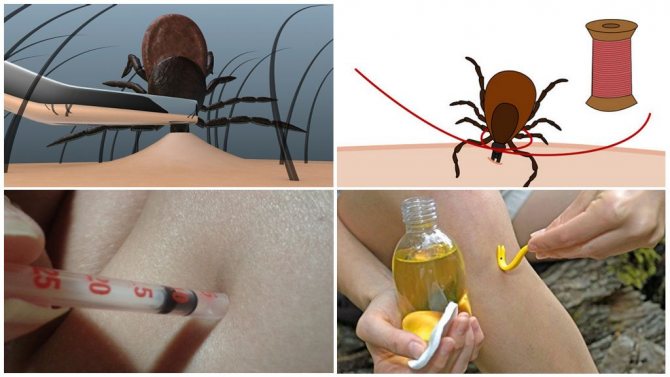
Tick removal methods
Why are parasites dangerous?
This small parasite can infect a person with dangerous diseases that cause serious complications and lead to irreparable consequences without treatment. The virus of the disease is in the saliva of an infected tick, not every insect is dangerous, but the risk is always present.
They are carriers of such diseases as encephalitis, Lyme disease, Ehrlichiosis, etc. When the virus enters the body, it goes through an incubation period after which symptoms begin to appear. Symptoms of diseases are very similar to those of colds and flu, so it is very important not to self-medicate, but to see a doctor right away.
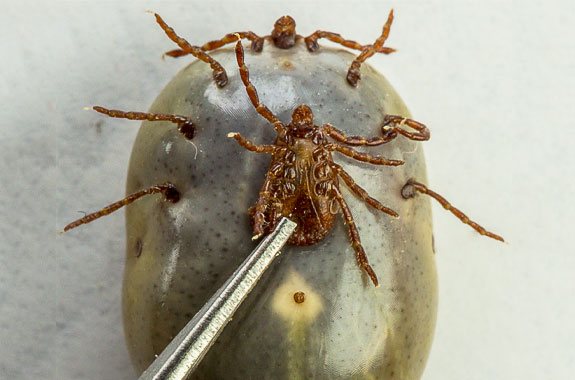

The first symptoms include body aches, weakness, fever, headache. In the absence of proper treatment, the condition worsens, a person may feel lighter for periods, but at this time an infection develops in the body. A person can have epilepsy, paralysis of the limbs. The nervous system and the brain are damaged.
A person can become infected with such terrible diseases not only through a tick bite. If an infected insect bites, for example, a cow, goat and other livestock, the animal becomes a carrier of these diseases. So after eating milk or eating meat, a person can get an infection.
What not to do when deleting
There are certain actions that will lead to the death of an arthropod. In this case, the tick relaxes the proboscis, and the blood sucked out by it, together with the infectious agents, returns back to the victim's body.
Therefore, you cannot:
- jerk the animal sharply;
- squeeze the torso strongly;
- pick out with something sharp;
- "Gnaw off" with your teeth;
- cauterize;
- lubricate the arthropod with gasoline, various detergents and other household liquids.
With any method of removal, the tick is not pulled out, but twisted. Among the illiterate methods of how to get a tick, options using oil or a red-hot needle were previously common. Today you can also find these tips, so it makes sense to start with them.
Special devices
In order to remove the tick from the human body without stress, eliminating the crushing of the parasite, special devices have been developed - twists. With their help, you can painlessly and completely unscrew the tick, both large and small.
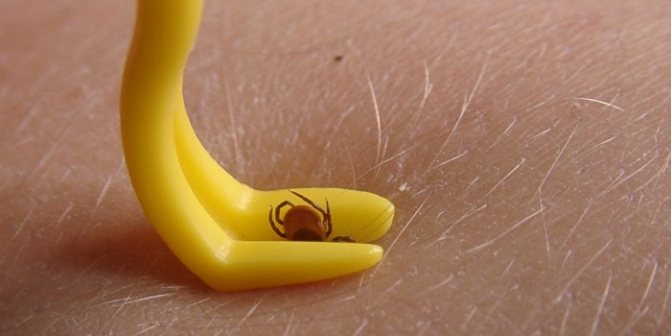

Pros of the twisting machine:
- allows you to get the whole tick together with the proboscis;
- does not squeeze the pest's body, which minimizes the risk of infection transmission;
- ease of use.
Removal of parasites of any size occurs instantly at any age of the bite, from any hard-to-reach place. After watching the video, you can easily remove the tick from the human body.
If you don't have a special device, you can take a pair of tweezers or a thread and unscrew the tick.
Butter
The parasite can indeed be pulled out with oil. But you don't need to. The spiracles of the parasite are located on the back of the body. To remove the tick in this way, you will need vegetable oil and a wedding ring. The ring is placed so that the bloodsucker is inside the perimeter. Oil is poured into the ring and wait for the panting arthropod to come out of its own accord. In the absence of a ring, it is suggested to simply anoint the tick so that it comes out.
Important!
The arthropod may not crawl out and die right in the oil. The second variant of the development of events: an animal frightened by suffocation can regurgitate the sucked contents back into the wound. The same will happen if the arachnoid is simply lubricated with an oily liquid.
Even if the tick remains alive and crawls out, it will no longer be possible to take it to the clinic, since "oily" animals are not accepted there for analysis. For the same reason, you cannot lubricate arachnoid with gasoline, cream, detergent and other chemicals.
Prohibited methods
Various experiments to remove the blood-sucking insect are costly for health. The consequences of improper actions often become infection of wounds with poisoned blood of the parasite. But you can avoid troubles. It is categorically impossible:
- pull out the pest sharply;
- squeeze, try to take out the bloodsucker with your teeth;
- lubricate the abdomen with vegetable oil, gasoline, nail polish, acetone;
- burn with cigarettes, matches.
If there are still fragments of an insect in the body, it is necessary to act as if pulling out a splinter. To do this, you need a needle - a sewing one or from a syringe, any other thin sharp instrument that is heated on fire. The location of the parasite must be treated with an antiseptic. Once the procedure is complete, the area is re-lubricated with an antiseptic.
Needle
An ancient way of the middle of the last century: to pierce the belly of the tick with a red-hot needle.
Important!
This is an invalid method.
It will be possible to pull out the pest in this way. Having received a portion of saliva and intestinal contents with possible pathogens in the blood beforehand. A half-burnt corpse will not be suitable for analysis. The same applies to burning with a cigarette.
There are safer and safer ways to get rid of ticks on your body. But the level of security they have is different. You can arrange these methods in order of increasing safety for a person.
Fingers
This method is not reliable, since the abdomen of the bloodsucker will necessarily be squeezed. But a recently sucked parasite can be pulled out on your own without resorting to other methods.
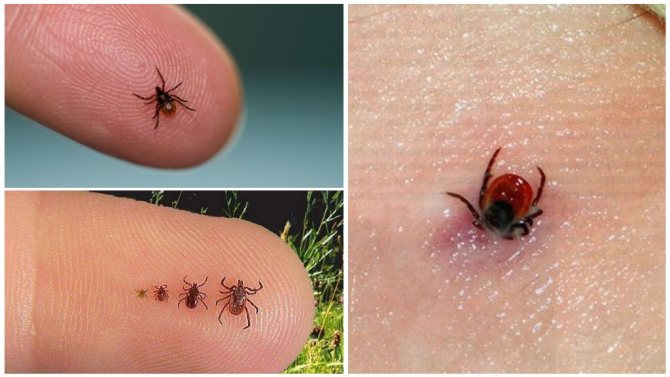

Removing the tick with your fingers
Important!
You can't grab a tick by the body. The arthropod is grasped with the fingers so that the nails are located as close as possible to the skin and under the pest's chest. Then do not pull it out, but carefully unhook the tick. When removing, it is important to remember in which direction to twist the tick: clockwise or counterclockwise. When sucking, the arthropod twists clockwise, therefore, it must be removed by turning it counterclockwise.
What not to do
It is forbidden to tear, pull out, crush the insect and use force. All these actions lead to the fact that the little body is torn apart, which increases the likelihood of infection. In addition, if the abdomen is torn off, the head will remain in the wound, and this leads to inflammation and decay of the wound, it must be removed.
In the case when it is impossible to carry out the procedure on your own, for example, the tick is sucked on the back, under the arm and other places, you need to ask for any help, you cannot wait until it disappears by itself.
Syringe
Removing a sucked tick can be done with a disposable syringe, although this is a laborious method. A tip with a spout is cut off from an insulin or 5-cc syringe, trying to make the cut as even as possible. Then put the syringe to the place where the animal was sucked and pull the piston.
It is said that the resulting vacuum will pull the arthropod out of the skin. The method works if the ixod has not yet had time to bite into the skin (it concerns the taiga) or has not had time to properly drink blood. Otherwise, there is a chance, instead of a whole creature, to get a spray of entrails in a syringe and an empty shell from the parasite in the skin.
With a thread
The most time consuming way to remove a tick, which requires a lot of skill. You can get the parasite with a thread only if its head has not yet managed to enter the deep layer of the epidermis as in the photo.
While the head is still outside, a loop is thrown over it. This procedure requires some skill and is not available to everyone, since too small a tick will "jump out" of the loop, and it is better not to bring it to a large one. After the loop is safely tightened on the head, and not on the abdomen, you can start getting rid of the aggressor using the same method of twisting it out of the skin.
Preventive measures
In the middle lane, ticks become active in early April. To protect yourself and your children and minimize contact with dangerous insects, do this:
- go to nature in closed clothes. Choose long sleeves, closed shoes, hats or headscarves;
- wear light-colored clothes, you can notice a tick on them faster;
- while in a forest or park, do not walk on tall grass or among bushes;
- treat clothing with appropriate insect repellent protection before going out into the countryside.
Back home, carefully check your clothes and body for unwanted parasites.
In children, they most often stick on the head, neck and behind the ears, but they can also be on the arms and armpits.
Adults "bite" in the chest area, dig into the arms and armpits.
Industrial Tools
This is the smartest and safest way to get arthropods out of the body. The most popular brand is the Nippes tweezers, which look more like a nailer. There are quite a few such special tools today, but they all have the same removal algorithm: a foot with a slit is brought to the parasite. To pull the animal out, twist the tweezers counterclockwise.
This tool is most convenient when you need to get the sucked parasite out of your head. It is very inconvenient to use any other options, except for "oil", which is better not to use at all.
On a note!
The advantages of the tools are that the tick can be guaranteed to be pulled out safe and sound for transfer to the clinic. They are inexpensive and useful to have in the house, especially if the family has a child.
Precautions
A squashed parasite injects more toxins, so you can't rush, panic, and use untested methods. When going into the woods, you should make sure that you have a bottle of disinfectant with you in case of bites.
Elementary Precautionary Laws:
- Clothing must be covered. The head is protected, the trousers are tucked into the socks, the cuffs are fastened.
- It is advisable to treat open areas of the body with repellents (lotions, creams, aerosols) that repel bloodsucking.
- Seats on the grass must be covered with a blanket. Periodically inspect clothing for insects. Ticks are slow, so you can shake them off if you find them.
- In the active season of tick development (spring), it is better to get vaccinated against encephalitis.
It is interesting: human ticks.
The most dangerous diseases transmitted by ticks are borreliosis and encephalitis, leading to damage to the heart, joints and other organs.
For analyzes, a prerequisite is the integrity of the arthropod, which must remain alive. To do this, it is placed in a container on a damp cloth or cotton wool.
What to do if you could not remove the tick whole
Do not panic. It is far from always possible to pull out the ixod whole with improvised means. Doctors recommend in this case to disinfect the wound and wait until an abscess forms. The remains of the ixod will come out on their own with pus.
Those who do not want to wait can try to pull out the remnants of the tick with a disinfected needle. Just like removing a splinter.
Recommendations of doctors
Usually doctors recommend the following sequence of actions:
- gently pull out the tick;
- place it in a clean jar for analysis / incinerate;
- disinfect the bite site;
- if the head remains in the skin, lubricate the wound with iodine;
- Wash the hands.
If you do not remove the tick in time, it will finally bite into the skin and it will be very difficult to pull it out of there until it falls off. The female can drink blood for a week. During feeding, the individual will inject a significant amount of saliva, which may be with the causative agent of the disease. If, after a tick bite, a few days later, malaise manifests itself, fever and vomiting appear, you should contact the clinic, be sure to mention the bite.
It is desirable that specialists be engaged in the removal of the parasite, it is impossible to tear it off “in a simple way”. Although dog owners often remove bloodsuckers this way.
Treatment of the bite site after extraction
After removing the parasite, the skin must be disinfected. The area near the bite should be treated; it is not recommended to touch the wound itself in order to avoid getting burned. The only thing you can fill the wound with is brilliant green.


You can treat the wound with brilliant green using a sterile bandage, a cotton swab, a medical pencil with brilliant green.
Hydrogen peroxide, rubbing alcohol, iodine, and any other antiseptic (such as Chlorhexidine) can be used to disinfect the skin. After treatment, the site of the bite must be left without a bandage. If necessary, you can seal it with adhesive tape. Friction of the affected area should be avoided for 1-2 days.


Today, Chlorhexidine is in the first place among many pharmacy products.

